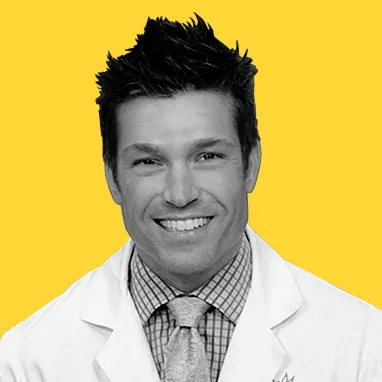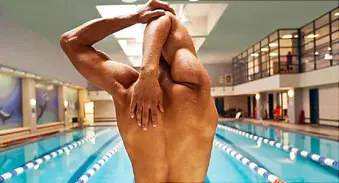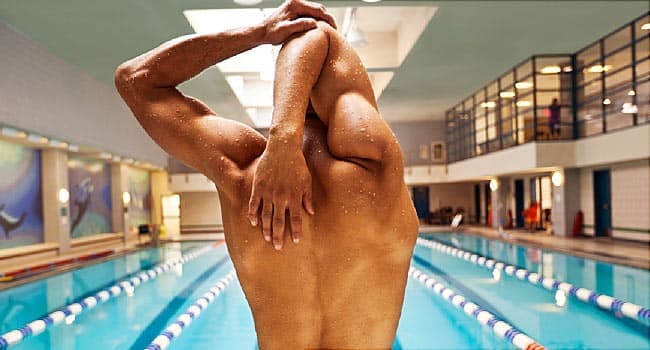Quiz: Test Your Sports Injury Savvy


Which sport causes the most head injuries?
- Football
- Cycling
- Baseball
- Soccer
Bicycling causes the most head injuries from sports or recreation, causing nearly 85,000 visits to U.S. emergency rooms in 2009. Most sports-related deaths are the result of head injuries.Experts say that 85% of cycling-related head injuries could be prevented with correct use of helmets.
Where is the largest (and often injured) tendon in the body?
- Neck
- Back
- Ankle
- Shoulder
The Achilles tendon is the largest tendon in your body -- and it's prone to injury. Each one connects your calf muscles to your heel bone. Repeated stress from running or jumping can inflame the tendon, known as Achilles tendinitis. If the condition lasts a long time, tiny tears develop in the tendon. That's called Achilles tendonosis.Both injuries are usually treated with rest, ice, anti-inflammatory medications, and physical therapy. Surgery may be needed in severe cases or if the Achilles tendon is ruptured or torn.
What's the exact cause of muscle cramps?
- Injury
- Dehydration
- Vitamin deficiency
- Unknown
The exact cause of muscle cramps -- also called a muscle spasm or "charley horse" -- is not known. They happen when one of your muscles or muscle groups, usually in your calf or thigh, suddenly tightens up. Muscle fatigue, poor conditioning, dehydration, depletion of electrolytes, or muscles that are cold may also play a role.Cramps can be quite painful, but they’re usually not serious and often go away on their own. You can ease the cramp by stopping whatever activity you were doing when it started and by gently stretching the muscle. Apply heat to tense or tight muscles and apply ice to muscles that are tender or sore.
A sprain is an injury to:
- A muscle
- A tendon
- A ligament
- A bursa
A sprain happens when you stretch or tear one of your ligaments. Ligaments are bands of tissue that connect bones to each other. Sprains typically happen to ankles, knees, or wrists that are twisted or turned the wrong way. Signs of a sprain include pain, bruising, swelling, instability, and joint stiffness.A strain is different. Strains happen to your muscles or tendons -- the tissue that connects muscles to bones. Strains happen when the tissue is overstretched or over-tightened. Symptoms include pain, muscle spasm, and weakness.
What causes the most emergency room visits?
- Cuts
- Broken bones
- Sprains and strains
- Bruises and scrapes
Most sports-related emergency room visits come from strains and sprains, about 29% according to the CDC. Broken bones are next, and bruises and scrapes are third. Ankles are the most injured body part at 12%. Fingers and faces are second and third.When is a sprain or strain serious enough to see a health care professional? If you have severe pain, swelling, or numbness, or if you can't bear weight on the area, you should see a doctor. Another reason for a doctor's visit is if you have pain and swelling, instability, or joint abnormality from an old injury. If you don't have any of these signs, it may be safe to treat your injury at home.
What is R.I.C.E. treatment?
- Rest, Ice, Crutches, Elevation
- Rest, Ice, Compression, Elevation
- Rest, Ibuprofen, Crutches, Exercise
- Reinforcement, Immobilization, Cryotherapy, Electrostimulation
R.I.C.E is the most common initial treatment for mild or moderate sprains and strains. Rest helps your body heal. Ice, compression, and elevation reduce swelling and pain.Other common treatments include anti-inflammatory medications such as NSAIDs. Wrapping or bracing can help support the injured joint or body part. Only the most severe sprains and strains require surgery.
What's the most common runner's injury?
- Shin splints
- Runner's knee
- Achilles tendinitis
- Plantar fasciitis
Runners are particularly prone to injury because running is a weight-bearing exercise with repeated stress. Runner's knee -- which is irritated cartilage -- is the most common complaint, causing pain near the kneecap. You may feel it most when going up or down stairs, kneeling, or squatting.If you want to avoid runner's knee, you should warm up before each workout and have a cool-down period afterward. Choose running shoes that fit well and replace them regularly. And don't increase the distance you run too quickly -- no more than 10% each week.
Shin splints are caused by:
- Tiny fractures
- Torn ligaments
- Inflammation
- All of the above
Shin splints are caused by inflammation of muscles, tendons, bone, and other tissue that surrounds the shin bone in the lower leg. The pain occurs behind the inner edge of the bone, called the tibia. The injury happens mostly to runners, dancers, aerobic exercisers, and other people whose legs hit the ground over and over again.If you have shin splints, you know they can be painful. But they typically are not serious. Treatment is usually a matter of resting the injury and sometimes applying ice or a cold pack. An over-the-counter pain reliever can be helpful. Surgery is rarely necessary.
What do golfers and weightlifters injure most often?
- The knee
- The hips
- The lower back
- The elbow
The most common injury in golf and weight lifting affects the lower back. The back carries most of the weight in weight lifting and absorbs most of the twisting of the body in golf. The most vulnerable part is the lower back -- or lumbar vertebrae -- where your body weight exerts the most pressure. Too much weight or twisting can injure the disks between your vertebrae. The result is often a slipped disk, also called a ruptured or herniated disk.Treatment may include pain medication, anti-inflammatory medication, steroid injections, and physical therapy. Only a small percentage of people need surgery.
Tennis elbow is usually caused by:
- Trauma
- Infection
- Underuse
- Overuse
Tennis elbow -- known as lateral epicondylitis -- is caused by overuse. That means a part of the body suffers the same minor injury over and over again. Other overuse injuries are golfer's elbow, runner's knee, and shin splints. The result is inflammation and pain.About 90% of people with tennis elbow get better with rest, anti-inflammatory medication, physical therapy, and a brace for the forearm. Severe cases may require surgery.
A good warmup will:
- Increase your blood flow
- Warm your muscles
- Boost your breathing
- All of the above
A good warmup before exercise has several benefits: increasing your breathing rate, raising your muscle temperature, and increasing your blood flow. Studies show that cold muscles are more prone to injury.How should you warm up? Simply do an easier version of your planned activity. If you're playing golf or tennis, spend a few minutes taking easy practice swings. Then work your way up to light aerobic activity like jumping jacks or running or walking in place.
What's the best time to stretch your muscles?
- After warming up
- During exercise
- After exercise
- None of the above
There's no proof that stretching your muscles before a workout will reduce injuries. The best time to stretch is during a cool-down after sports or exercise. That's when your muscles are most warmed up and easily stretched. If you do want to stretch before a workout, make sure you warm up gently before you stretch.
Women are at greater risk for sports injuries than men.
- True
- False
Women are at higher risk for injury than men in many sports. Possible reasons include differences in knee and thigh muscles, changing estrogen levels, and lower bone mass. In some cases less conditioning may play a role, even though it can also cause a higher chance of injury in men.Women soccer and basketball players have much higher rates of anterior cruciate ligament injuries than men. The ACL can rip when a person changes direction quickly, lands from a jump, or slows down from running.
What is most often injured in downhill skiing?
- The head
- The knee
- The ankle
- The wrist
Knees take a beating on the slopes. And the most common knee injury is a sprain of the medial collateral ligament (MCL), which can be twisted in a fall. Another common injury is to the anterior cruciate ligament (ACL); this is especially true for women, who are at greater risk for ACL problems.Snowboarders are more likely to injure their wrists, because they use their hands to break sudden falls.
Surgery is required to fix a torn rotator cuff.
- True
- False
The rotator cuff is a group of four muscles and their tendons in the shoulder. It is often injured in sports-related falls or through long-term wear and tear. It is possible to maintain a comfortable range of motion in the shoulder without surgery, even if the tendon is fully torn. And most amateur sports enthusiasts usually try other treatments first. These may include nonsteroidal anti-inflammatory drugs, steroids, and/or physical therapy. Surgery may be recommended, though, if pain and weakness persist.
If you have plantar fasciitis, what part of your body is hurt?
- The knee
- The foot
- The ankle
- None of the above
The plantar fascia is connective tissue along the bottom of your foot. Inflammation known as plantar fasciitis develops from overuse because the connective tissue sustains minor injury over and over again.Treatment usually involves some combination of rest, ice, NSAIDs, and sometimes steroid injections. Supportive shoes, orthotics, and physical therapy are other options. Surgery is not usually necessary.
